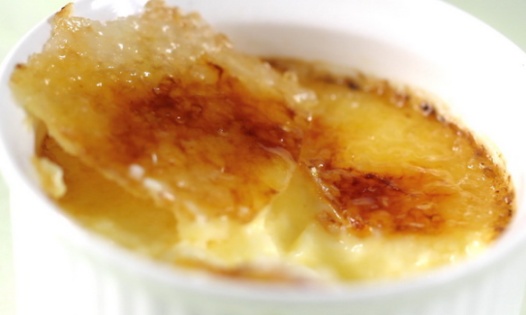“The roof! The roof! The roof is on Fire!’ The lyrics of the old ’80s song often run through my mind when I wear Fumidus, a smoky tank of a fragrance centered on vetiver and birch, with beautiful touches of salty, peaty, Laphroaig single-malt whiskey. It may be a creation from an Italian perfume house, but Fumidus conjures up images for me of a small house by a Scottish or Irish seaside village. Outdoor fires burn vetiver bricks, as a man sips his Islay scotch, and his old car rumbles idly by to the side, releasing whiffs of rubber and diesel, before quickly dying away. A thick haze of black smoke lies over the house, growing stronger with every passing minute, and soon turns into a vetiver smoke signal going up to Mars.
Fumidus is a behemoth of smoky greenness, so dark that it verges on black. Nay, it actually is visually black for me, at least at first. If it were a vehicle, it wouldn’t be some sleek, sporty Italian number, but a lumbering, heavy, intimidating, military Sherman tank intended to plow down everything in its path. And, for the most part, I mean that in quite a good way. But let’s be clear about a few things right from the start: Fumidus is a challenging fragrance that requires some patience; you must love both vetiver and birch tar in all their facets; and there is nothing remotely unisex about this fragrance. Nothing. Not one iota. It is pure masculinity with an unrepentant swagger and enough testosterone to give Arnold Schwarzenegger pause.
Fumidus is an eau de parfum from Profumum Roma that was released in 1996, and its name seems intended to give you full warning of what it is all about. Profumum‘s website writes quite simply:
Aristocratic white smoke of prestigious cigars
diffuses in chambers heated
by peaty Scottish whiskies
and the warmth of fireplaces burning oak logs.
[Notes:] Vetiver, Smoked birch
I don’t think that summation covers the half of it! Luckyscent‘s description is much more on-point and apt, in my opinion:
Fumidus means smoky, and smoky it is. The smokiness of aged Laphroaig scotch served neat, It is also earthy – the earthiness of rich, freshly tilled land surrounded by uncut forest. Deep and magnetic and commanding, this blend of rich peat, grassy vetiver and brisk birch conjures up a vast estate and its moody young lord making his way through the fog on an unruly stallion. It’s outdoorsy, but in a way that makes it clear that you don’t just work in the forest, you own that forest yourself, along with a good bit of grassland and quite possibly a castle. Unmistakably masculine and very sexy.
[Notes:] Essence of distilled scotch, vetiver root, birch bark.
Fumidus opens on my skin with a rich, heavy, very concentrated wave of single-malt whiskey from the Islay isle — and, God, is it fantastic. I have a particular weakness for Laphroaig (though Laguvulin 16 is also superb), and that is precisely what is pulsating off my skin like a sonic sound wave. Boozy, just barely sweetened, very smoky, Islay scotch, thoroughly infused with peaty bog and a touch of salt.
It completely evokes Scotland or Ireland by the coast, as the salty sea air passes over the cliffs and moves over earthy, dank soil on its way to a small farmhouse. In front of it, a large campfire is burning birch logs and vetiver bricks. A man sips scotch, and contemplates the singed woods that are slowly going up in smoke. A sliver of compost lies fermenting in the corner, near his old car. It lies idling, its engines emitting rubber and diesel which mixes in with the smell of its rough, broken leather. They all rise up, swirling into the dark haze that lies like an oily, black blanket over the house.

Talisker, an Islay single malt, on burnt wood in a camp fire. Photo: Savuista at the Savuista blog.http://savuista.blogspot.com/2013_10_01_archive.html
The best parts of Fumidus’ opening for me is the smoky, peaty Scotch commingled with the saltiness, the dank earth and, yes, the touch of compost. Fumidus is far from being an “aquatic” fragrance, in the way that we classify such things, but it briefly portrays an almost aquatic saltiness from a Northern Atlantic seaside town better than anything I’ve encountered in a while. It merely happens to be the salty feel of vetiver and burning smoke, instead of kelp. (For actual “kelp,” and genuine Northern sea aromas, Profumum has Acqua di Sale.) The small slivers of rubber and diesel at Fumidus’ edges add to the originality of the mix, though the diesel only lasts about 10 minutes, at most, on my skin.
I’m slightly less enthused by the sheer rawness of the burning vetiver, but that is solely because of my personal issues with the note. As I’ve mentioned a few times in the past, I am not the world’s greatest vetiver lover, especially when it is in soliflore or concentrated form. I also prefer a particular type of vetiver aroma, like the earthier dank version that is in Vetiverus by Olivier & Co. For me, the fresher and simultaneously almost raw sort of smoky vetiver that is in Fumidus is much more challenging. If it weren’t quite so intense, it might be easier. That said, its peaty, marshy, almost fungal aspects, and the way it reeks of sweetness and booze… those parts are fantastic. The single-malt sweetness is so incredibly rich, nuanced, and deep that I want much, much more of it. The amount that appears on my skin isn’t enormous, alas.
There is a definite oiliness to Fumidus that I think speaks to the perfume’s character as a whole. It goes beyond the mere issue of tarriness, or Fumidus’ occasionally rubbered undertones. It’s also quite separate from the heaviness of that vetiver stew. Rather, there is an unctuousness to Fumidus that feels as though extremely concentrated essences were used to create an attar-like thickness. Fumidus feels quite opaque, and, as such, it fully bears the Profumum Roma signature. Many of their supposed “eau de parfums” are actually Extraits, reportedly coming in at a whopping 42%-44% in concentration, and Fumidus feels heavier than most.
It also has good sillage at first. Using the dabbed equivalent of one large spray from an actual perfume bottle, I experienced roughly 3 inches in projection, though it felt like a solid brick wall in terms of heft and weight. I suspect most people’s usual 2 spray quantity would yield a much more forceful cloud. Perhaps a little too forceful for most practical purposes. As I noted at the start, Fumidus is a challenging fragrance that may require a little patience at first, and initially going to town with the number of sprays may not be the wisest thing until you get used to it.
I have to wonder about Fumidus’ list of notes, and whether it is complete. I’ve noticed in the past that Profumum Roma has a tendency to give a nutshell synopsis of the ingredients in its fragrances, and to skip over the finer points. With Fumidus, it feels as if there may be some sort of resin or benzoin underlying all that smoky vetiver, as Fumidus turns much richer and slightly sweeter after 30 minutes. It’s a different sort of sweetness than the boozy scotch, and feels more like styrax or some balm. Whatever the reason or source, it helps wipe away the diesel aroma entirely, while also fractionally softening some of the rubber.
The birch, however, is beginning to resemble something out of La Brea’s famous tar pits in Los Angeles. In fact, it feels as though it’s practically bubbling. As the fire continues to burn the vetiver logs, the campfire smoke billows out into the skin. The earthy, almost marshy muskiness that I love so much fades away about 45 minutes in, leaving a vetiver that is primarily smoked and only a little bit boozy. It’s a mix that is probably incredibly sexy and hot on the right man, but I cannot imagine any woman pulling it off. Frankly, not every man could (or may want to) either.

David Gandy for Esquire Mexico (December 2013). Photo: John Russo. Source: davidjamesgandy.blogspot.com
However, on the right man… on the right man, Fumidus would be riveting. He would definitely be wearing all black and leather, like one of the Ramones. Or, he would be in a bespoke power suit and getting out of a Bentley. There is nothing in-between, in my opinion. Absolutely none. Fumidus is too much of a balls-to-the-wall explosion of darkness and untrammeled intensity. It feels ferocious, untamed, aggressively masculine — and utterly unrepentant about any of it. In fact, it would probably give you a cheeky grin at thinking it was a simple vetiver fragrance. Either that, or snarl in your face before throwing back a neat three-fingers of Laphroaig.
In short, Fumidus’ brutishness in the opening hours feels quite feral. It merely happens to be disguised or cloaked in the veneer of a civilized sophisticate’s taste for expensive scotch. None of that is an insult, by the way. I think there is something to be deeply admired about a fragrance that is so unapologetic about having a purely raw and untamed heart. I respect its brute force enormously, as well as its smoldering intensity and how it plays with something as refined as single-malt scotch in a sea of more primitive darkness. Now that I think of it, Fumidus would be a good scent, symbolically, for the television version of Hannibal, except Mads Mikkelsen’s character would never be as obvious as Fumidus can be.
Fumidus doesn’t change drastically at its core for quite a few hours. Some of the subtler aspects may fade away, before briefly popping back up at the periphery, but the perfume’s essence continues to be various manifestations of vetiver and birch, with vetiver coming out ahead. Fumidus’ sillage drops down at the end of the first hour to roughly 2 inches above the skin, where it stays for a while. The biggest change, however, is that the beautiful booziness begins to fade at the end of the second hour and the start of the third. Until then, the vetiver and birch had been in a two-way race for the top spot, with the vetiver leading by a nose, while the Laphraoig quietly trailed behind. By the middle of the 4th hour, the scotch is far behind, and it falls out of the race entirely by the start of the 5th hour.
In its middle stage, beginning roughly around about the 4.5 hour mark, Fumidus turns essentially into a more concentrated, smokier vetiver soliflore. I’ve read a few people who say that Fumidus’ drydown is like that of Chanel‘s famous Sycomore, but I find extreme differences. On my skin, Sycomore never wafted hardcore birch smoke or tarriness. It also never felt like a soliflore. In its later phase, I had impressions of burnt caramel, black cocoa powder, incense, and dry earth. Flickering hints of evergreen from a juniper note also added a certain chilly coolness which offset Sycomore’s smoky earthiness, as did the creamy sandalwood in the base. But the main difference is the vetiver’s smokiness. It was significantly softer and much smoother in Sycomore. Fumidus feels like smoked vetiver on steroids. Sycomore is not. Neither brutish force nor opaque singularity are words that I’d use to describe the Chanel scent.
And Fumidus is quite singular in its focus. On my skin, it turns into campfire smoked vetiver with singed woods in the middle phase, then into purely smoked vetiver, before finally ending up as rather minty vetiver with only subtle traces of smokiness. My skin has a tendency to turn Haitian vetiver into something quite fresh, bright green, and peppermint-like, so once the birch in Fumidus fades away as a hefty presence, the grass’ other nuances come more to the forefront. In its final moments, Fumidus is like a thin smear of vetiver greenness, and nothing more. All in all, it lasted an enormous 15.75 hours on my perfume consuming skin, with the equivalent of one spray from an actual bottle. It’s not surprising. Profumum Roma’s fragrances last for an eternity, and on people with normal skin, quite easily in excess of 24 hours.
There are mixed reviews for Fumidus out there, primarily because of the sheer intensity of its smokiness. As one person on Fragrantica called “Scentzilla” put it so well, “what the hell did you expect from a perfume that is named ‘FUMIDUS’, I ask you?” In all fairness, however, for a few people, the specific difficulty seems to be an ashtray-like nuance to the burnt birch wood:
Seems it’s a love or hate thing with this scent– to me it smells like someone spilled some Scotch into an ashtray full of cigarette butts. Had to wash it off.
There are numerous Basenotes threads devoted to Fumidus, from its official entry page where someone brings up Chanel’s Sycomore once again, to general discussion threads. In one beautifully evocative description, a chap talks about Fumidus as perfume Art, with a smell that also bordered on that of oil paints:
What a beautiful example of perfume as art. I was initially repulsed, trying to decide why this would be proffered as a perfume to be worn on the body. The initial blast of birch tar was an oil painting completed, but propped in the corner waiting to dry. The smell of an artist awake until the final stroke was applied.
I don’t get the smoke, but I get the effort. This is a perfume that captures a moment. Having spent innumerable hours in an artist’s studio, I get no warm outdoorsy notes, but straight up painting. Maybe the woody scented breeze through an open studio window. Like spending an afternoon with Picasso. The perfect fragrance for a day at the art museum. I shall have an entire bottle for that purpose alone.
In another thread, a commentator called “Sloan” has a review that made me nod in agreement, especially at his comparison to Sid Vicious. “Sloan” loves Fumidus, though he admits bluntly that he hated it at first because he judged it too quickly and without adequate patience:
I have since come around to developing a serious appreciation for this fragrance. My original negative comments were a prime example of judging a fragrance before giving it a thorough wearing. After testing a majority of the line, Fumidus has since become my first and only full bottle purchase from Profumum and an all-time favorite.
Fumidus is a stunning smoky, woody, earhty vetiver fragrance with a ghost of Scotch. The smoked birch opening has a “sod off” snarl that would have made Sid Vicious green with envy. As the smokier top notes fade, the benzoin note adds a Scotch element. Recalls the smoky, peaty Laphroaig Scotch, which has an odor similar to tincture of benzoin or Benzocaine. The drydown is an earthy vetiver reminiscent of Lorenzo Villoresi’s amazing Vetiver with some wood added to the mix. Ferocious at and brutish times, Fumidus is a beast that energizes my inner animal. A complex, shape shifting, powerhouse not for the meek. The wearing experience is akin to a symbiotic relationship in which Fumidus and the wearer wear each other. Remember, patience and persistence is required.
Another person who changed his mind about Fumidus wrote:
I’ve been trying this one out lately. At first I hated it, mostly because I felt there was some sort of compost or fungus note in there, but now I’m really growing found of it.
A few things it reminds me of:
– The wet rich earthy soil behind my backyard. I live in a somewhat foresty area.
– My elementary school playground. The floor was covered in a birch like wood. After a rainshower the the entire place smelt like Fumidus.
– The inside of a old wooden cabin with a fire inside going off, somewhere out in the middle of the nowhere.
As should be clear by now, Fumidus is quite a “love it/loathe it” scent, so there are some very negative reviews on Basenotes as well. In the official thread for the fragrance, some commentators write:
- Scotch and vetiver – these notes I love. Birch bark – this I don’t. I think it’s a shame that birch bark was included in this scent because I think the other notes in Fumidus are so outstanding: The Scotch and vetiver are strong enough to survive through the birch bark miasma… they exhibit the potential of forming an intriguing accord, but, alas, in the end they are undone by the presence of lesser than they. I love the smokiness and the intriguing combination of scotch and vetiver of the fragrance, and this would be a great fragrance if it weren’t for the birch.
- I get mildew; chestnut; the wet, black rot of forest-floor compost; rooty vetiver. I’m afraid I find the overall effect to be decidedly disgusting. [¶] On the other hand, it’s not the disgusting of incompetence or indifference, and I can certainly envision some sick bastard enjoying this. It’s just an extreme scent. If the description appeals to you, don’t be too put off by the predominance of thumbs down. [¶]I would imagine that to enjoy this, you would have to really like Frederick Malle’s Vetiver Extraordinare, but find VE too tame and sanitized.
- Fumidus was a scrubber for me. As much as I love the raw vetiver in MPG RdV and Frederic Malle’s VE, the smoke in this fragrance just really blows me away. It smells a bit like a stale, half-smoked cigar drenched in scotch.. over top of a great, raw vetiver. It’s just a bit too dirty – I wish there was something in here to temper it a bit. [Emphasis to names added by me.]
At a much harsher extreme is the review from “Alfarom” who writes:
The notes list is promising the scent is definitely disappointing. Ok, there are three ways to approach this review for me:
1) Great perfume if you like to burn wet vetiver roots in the fireplace (translated: A LOT OF SMOKE) while drinking some Scotch and in the meantime you don’t realize your place is going on fire.
2) great perfume if you want to smell like you’ve just been rescued from you mountain hut that has gone on fire.
3) great perfume if you like to set fire to the trashcan where you have wasted an old vetiver fragrance gone bad.
To me it simply smells horrible, unpleasant and definitely unbalanced on the smoky side. Sorry, I’ve to pass on this one.
I think “Alfarom” is a great critic, and I usually agree with him 8 times out of 10. In this case, though, I like Fumidus significantly more than he does. I happen to love intense smokiness, and the Laphroaig part blows me away, even if it only lasts a few hours. My thing is not so much the smokiness, as the fact that I simply don’t like smoky vetiver all that much. So, ultimately, I really do end up in the same place as he does, in giving Fumidus a personal pass.
At the end of the day, Fumidus is not a scent for the faint of heart, and your feelings about it are really going to come down to your personal tastes, not to mention your skin chemistry. It is an extremely challenging fragrance — and it is intentionally crafted that way. So, if you’re a hardcore vetiver lover, give it a try, but also exercise a little patience. There is beauty in its raw, primitive, feral nature, but not everyone likes untamed beasts. On the right man, though, with the right skin chemistry, I think Fumidus would be utterly captivating.








































